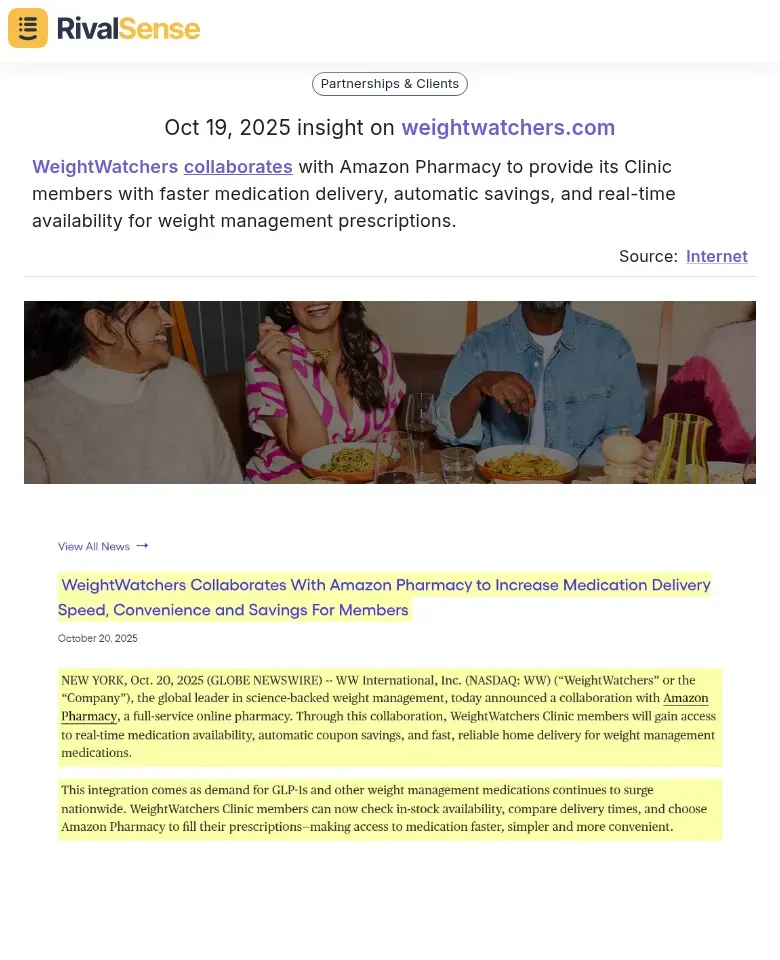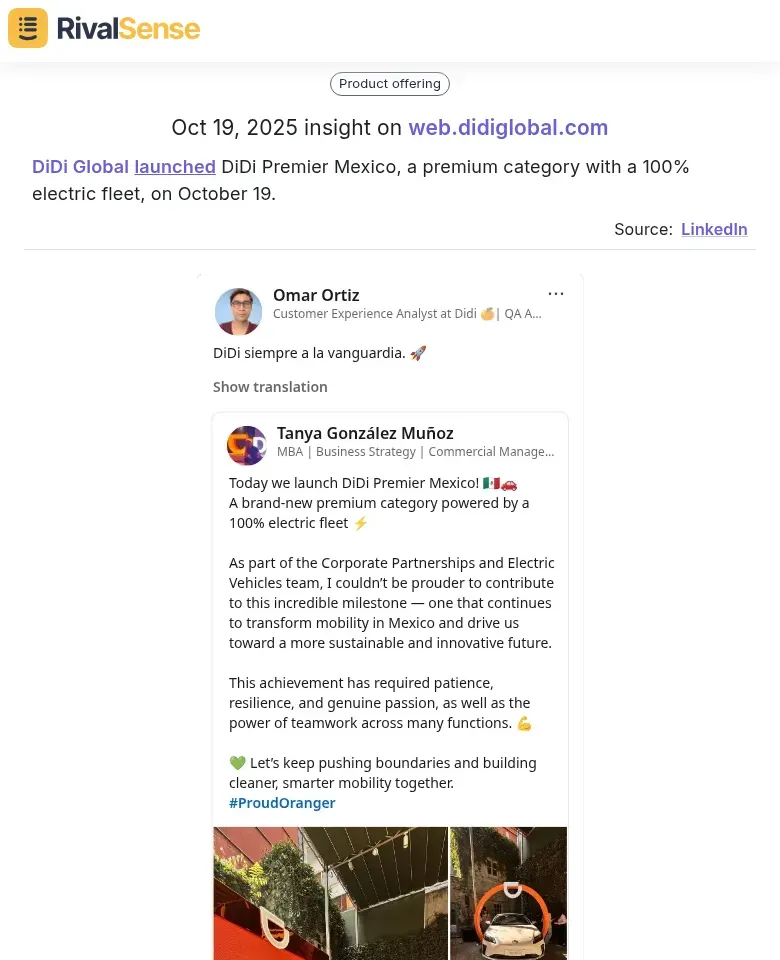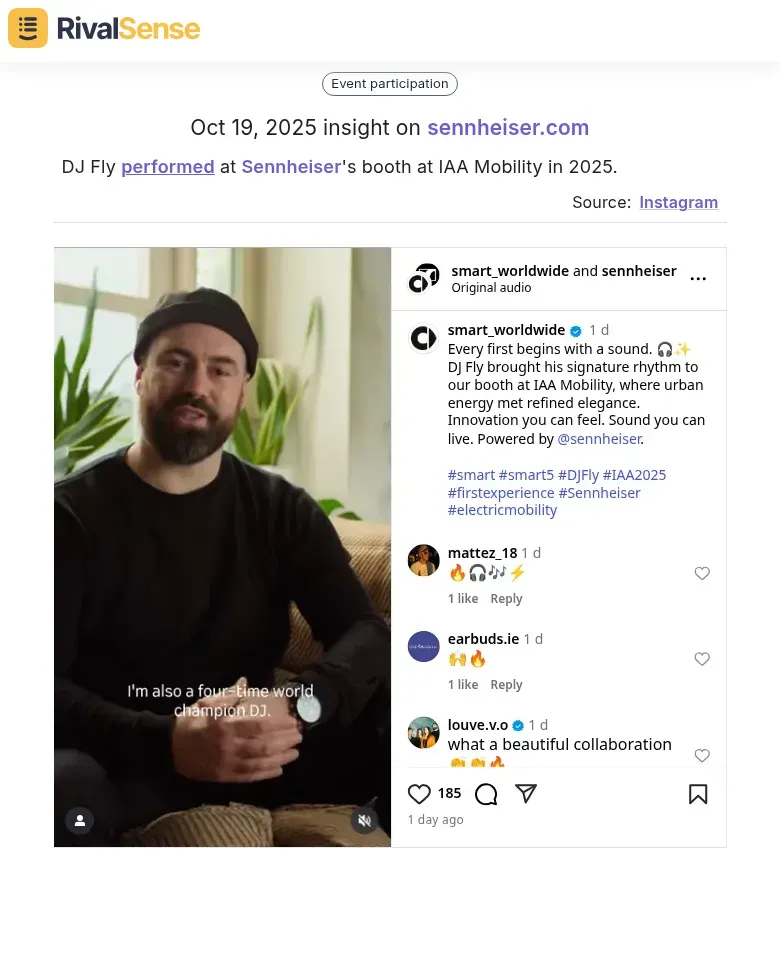Competitor Promotional Offers Tracking Framework for Influencer Platforms
In the dynamic world of influencer platforms, staying ahead of competitor moves is essential for survival and growth. Tracking competitor promotional offers is critical because it directly impacts your market positioning and influencer acquisition efforts. When rivals launch aggressive discounts, referral bonuses, or exclusive deals, they can quickly siphon off your top creators and shift market dynamics. A systematic framework transforms reactive monitoring into proactive competitive intelligence.
Start by identifying key competitors and their typical offer cycles. Monitor their social channels, email campaigns, and partnership announcements for real-time insights. Use tools like RivalSense to automate tracking and receive alerts on new promotions. Analyze the effectiveness of their offers: Are they attracting high-value influencers? How do their conversion rates compare? This intelligence helps you anticipate market moves, refine your own offers, and avoid being blindsided. For example, if a competitor rolls out a 20% revenue boost for nano-influencers, you can counter with a tailored package that addresses unmet needs.
🚀 Practical tip: Maintain a competitor offer dashboard with columns for offer type, duration, target audience, and performance metrics. Regularly review this data to spot trends and adjust your strategy, ensuring you stay ahead in the competitive influencer landscape.
Why Comprehensive Competitor Tracking Matters
Effective competitor intelligence goes beyond monitoring promotional offers alone. Tracking a wide range of activities—such as partnerships, product launches, and event participations—can provide deeper insights into market trends and strategic moves.
For example, RivalSense identified that WeightWatchers collaborated with Amazon Pharmacy to enhance its Clinic services.  This partnership insight is valuable because it shows how competitors are leveraging collaborations to expand their value proposition, which could inspire similar strategic alliances in your business.
This partnership insight is valuable because it shows how competitors are leveraging collaborations to expand their value proposition, which could inspire similar strategic alliances in your business.
Another insight: DiDi Global launched DiDi Premier Mexico, a premium category with a 100% electric fleet.  Tracking product launches like this helps you anticipate industry shifts and innovation trends, allowing you to adapt your offerings proactively.
Tracking product launches like this helps you anticipate industry shifts and innovation trends, allowing you to adapt your offerings proactively.
Additionally, DJ Fly performed at Sennheiser's booth at IAA Mobility in 2025.  Event participation insights reveal how competitors are engaging with audiences and building brand presence, which can inform your own event marketing strategies.
Event participation insights reveal how competitors are engaging with audiences and building brand presence, which can inform your own event marketing strategies.
By monitoring these diverse activities, you gain a comprehensive understanding of competitor behavior and can make more informed strategic decisions.
Key Metrics and Data Points to Monitor
To track competitor promotional offers effectively, you need to focus on specific metrics and data points. Systematic monitoring uncovers strategic insights that can guide your decision-making.
Key Areas to Monitor:
- Offer Types: Document discounts (percentage vs. fixed), affiliate commission structures, exclusive deals (e.g., early access, limited-time bundles), and free trials. Example: Note if rivals offer 20% off for first-time influencers versus tiered commissions.
- Performance Indicators: Measure engagement rates (likes, shares, comments), conversion metrics (sign-ups, sales attributed to influencers), and influencer reach (audience size, demographics). Use tools to track hashtag performance and affiliate link clicks.
- Campaign Timing: Record frequency (weekly, monthly launches), seasonal trends (holiday pushes, back-to-school peaks), and campaign duration. Create a calendar to visualize patterns—e.g., competitors may ramp up Q4 offers.
Practical Steps:
- Set up alerts for competitor social media and email campaigns.
- Use a spreadsheet to log offers, dates, and metrics weekly.
- Analyze correlations: Do higher discounts drive more conversions?
- 📊 Tip: Benchmark your offers against top performers to identify gaps.
This framework helps you anticipate moves and optimize your influencer strategy.
Tools and Technologies for Effective Tracking
Leveraging the right tools is crucial for efficient competitor promotional offer tracking. Specialized platforms can automate data collection and provide real-time insights.
Leading tools like Modash, HypeAuditor, and Brand24 offer comprehensive monitoring across social channels. Key features to prioritize include real-time alerts for new campaigns, cross-platform coverage (Instagram, TikTok, YouTube), and influencer authenticity metrics to avoid fake engagement.
For actionable insights, integrate tracking data with analytics tools like Google Analytics or Tableau. This enables correlation between competitor promotions and your own performance metrics.
Checklist for Tool Selection:
- [ ] Real-time monitoring capabilities
- [ ] Multi-platform support
- [ ] API access for integration
- [ ] Customizable reporting
Practical Steps:
- Set up automated alerts for competitor mentions and hashtags
- Monitor influencer tier distribution (micro vs. macro)
- Track offer duration and redemption patterns
- Analyze engagement rates vs. follower counts
Use these insights to benchmark your offers and identify gaps in your strategy.
Building Your Tracking Framework: Step-by-Step Guide
Creating a robust tracking framework requires a structured approach to ensure consistency and accuracy. Start by defining your monitoring parameters and automating data collection.
Begin by tracking key metrics like discount percentages, promo codes, bundle deals, and seasonal campaigns across 5-10 primary competitors. Create a structured competitor list segmented by market tier (direct, indirect, aspirational) and document their typical offer cycles.
Automate data collection using tools like RivalSense to monitor competitor websites, social media, and email campaigns. Set up automated alerts for new promotions and schedule weekly reports that highlight emerging trends. Use APIs to integrate data directly into your analytics dashboard for real-time insights.
Establish performance benchmarks by analyzing historical data—calculate average discount rates, campaign durations, and customer acquisition costs. Set thresholds for competitive responses: if a rival offers 20%+ discounts or launches bundle deals, trigger immediate analysis.
Checklist for Framework Setup:
- [ ] Weekly competitor scan
- [ ] Monthly trend analysis
- [ ] Quarterly strategy review
🔍 Practical tip: Track offer effectiveness by monitoring competitor social engagement and conversion rates to validate your benchmarks.
Analyzing and Acting on Competitor Insights
Once you've gathered competitor promotional data, the next step is to interpret it strategically and take action. Analyzing patterns and weaknesses can help you refine your own offers and counter competitor moves.
Start by analyzing patterns in competitor offers—are they targeting specific influencer tiers, seasonal trends, or market gaps? Look for weaknesses like inconsistent messaging or poor timing that you can exploit.
Adjust your promotional strategy based on these insights. If competitors are offering flat-rate bonuses, consider performance-based incentives to attract quality creators. When rivals launch aggressive holiday campaigns, counter with early-bird offers or extended deadlines to capture market share.
Practical Steps:
- Create a competitor response matrix mapping their offers to your counter-strategies
- Set up automated alerts for competitor pricing changes
- A/B test your offers against competitor benchmarks
Case Study Examples:
- An influencer platform noticed competitors focusing solely on mega-influencers. They launched a micro-influencer program with tiered rewards, capturing an underserved segment and increasing platform engagement by 47% in six months.
- Another platform identified competitor churn during contract renewals and introduced flexible rolling contracts with loyalty bonuses, reducing their own churn by 32%.
💡 Key tip: Don't just match competitor offers—differentiate through unique value propositions like exclusive brand partnerships or advanced analytics tools that competitors lack.
Best Practices and Future Trends
Maintaining an effective tracking framework requires ongoing attention to data accuracy and emerging trends. Ethical practices and continuous improvement are key to long-term success.
Ensure data accuracy through automated validation checks and regular audits of competitor promotional data. Cross-reference multiple sources and establish clear guidelines for data collection that respect privacy and terms of service. Use tools like RivalSense to automate tracking while ensuring compliance.
Adapt to emerging trends by monitoring shifts in influencer marketing, such as the rise of micro-influencers, video-first content, and AI-driven personalization. Track how competitors leverage these trends in their promotions—for example, analyzing TikTok campaigns or interactive content strategies. Stay agile by setting up alerts for new promotion types and adjusting your framework quarterly.
For continuous improvement, create a feedback loop: review tracking metrics monthly, identify gaps, and scale the framework as your platform grows.
Checklist for Best Practices:
- [ ] Validate data sources regularly
- [ ] Update trend dashboards
- [ ] Train teams on ethical tracking practices
🚀 Tips: Use AI for anomaly detection in promotional patterns, and benchmark against industry standards.
🤝 Hint: Collaborate with influencers to gain insights into competitor tactics, ensuring your framework evolves with market dynamics.
Ready to Elevate Your Competitor Tracking?
Struggling to keep up with competitor moves? Try RivalSense for free and get your first competitor report today! Sign up here to automate your tracking and gain actionable insights.
📚 Read more
👉 How Slack's AI Shift Revealed Rivals' Strategic Response
👉 Twitter Competitor Pricing Insights: 2025 Strategic Benchmarking
👉 Media Industry Key Account Tracking: Your Strategic Cheat Sheet
👉 Actionable Market Entry Strategies Using Competitor Insights
👉 How to Leverage Competitor Personnel Changes for Strategic Advantage
